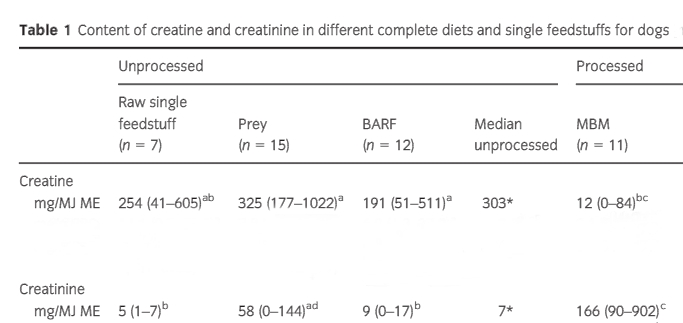Oui s'il se nourrit surtout avec des croquettes. Les recherches montrent qu'elles sont très pauvres en créatine. Il est temps de partager un peu de la vôtre pour qu'il reste vigoureux !
Creatine and creatinine contents in different diet types for dogs – effects of source and processing
B. Dobenecker Journal of Animal Physiology and Animal Nutrition 2015 December Volume 99, Issue 6, pages 1017–1024
The concentrations of creatine and its degradation product creatinine were determined in a variety of unprocessed as well as processed feedstuffs suitable for dogs. Unprocessed feedstuffs were categorised as single feedstuffs, bone and raw food diets (BARF), and small vertebrates, for example prey animals. Processed feedstuffs were categorised as meat/meat and bone meals, complete wet diets and complete dry diets. The feedstuffs were chosen to cover a broad range of each of the three defined processed and unprocessed feed categories available on the market without further subclustering. The creatine content of the samples was compared on a dry matter, protein and energy basis. The relation of creatine to crude protein permitted a rating of the meat quality in terms of muscle tissue. Results: We found no difference in creatine concentrations between the three categories of unprocessed feedstuffs (raw single feedstuffs, prey and BARF diets), neither on a dry matter basis nor when expressed relative to crude protein and metabolisable energy respectively. Significantly lower levels were determined in meat/meat and bone meal and commercial dry diets (e.g. 303 mg creatine/MJ ME in unprocessed vs. 6 mg/MJ ME in processed feedstuffs; p < 0.001).
We conclude that in relation to ME, the exclusive use of conventionally processed diets for dogs, especially dry diets, leads to considerably lower intake of creatine which is a natural compound of the diet of this carnivorous and omnivorous species.














